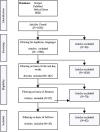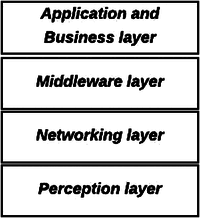IoT-based remote monitoring system: A new era for patient engagement
- PMID: 39720747
- PMCID: PMC11665796
- DOI: 10.1049/htl2.12089
IoT-based remote monitoring system: A new era for patient engagement
Abstract
Internet of Things (IoT) is changing patient engagement in healthcare by shifting from traditional care models to a continuous, technology-driven approach using IoT-based Remote Monitoring Systems (IoT-RMS). This research seeks to redefine patient engagement by examining how Internet of Things (IoT) technologies can impact healthcare management and patient-provider interactions at different phases. Additionally, it presents the relationship between patient engagement stages and IoT-RMS, which promotes patients' active participation using technological health management tools. The study emphasizes that IoT-RMS improves patient engagement, organized into three main stages: enabling, engaging, and empowering. This approach shows how technological progress encourages patient involvement and empowerment, leading to improved health results and personalized care. A systematic review and narrative analysis of Web of Science (WOS), Scopus databases, IEEE, and PubMed yielded 1832 studies regarding patient engagement and technology. Despite the optimistic findings, the article highlights the need for more research to evaluate the durability of technology interventions and long-term effectiveness.
Keywords: Internet of Things; IoT‐remote monitoring system; patient engagement.
© 2024 The Author(s). Healthcare Technology Letters published by John Wiley & Sons Ltd on behalf of The Institution of Engineering and Technology.
Conflict of interest statement
The authors declare no conflicts of interest.
Figures






Similar articles
-
IoT-enabled biosensors for real-time monitoring and early detection of chronic diseases.Phys Act Nutr. 2024 Dec;28(4):60-69. doi: 10.20463/pan.2024.0033. Epub 2024 Dec 31. Phys Act Nutr. 2024. PMID: 39934631 Free PMC article.
-
Smart Home-based IoT for Real-time and Secure Remote Health Monitoring of Triage and Priority System using Body Sensors: Multi-driven Systematic Review.J Med Syst. 2019 Jan 15;43(3):42. doi: 10.1007/s10916-019-1158-z. J Med Syst. 2019. PMID: 30648217
-
A systematic review and knowledge mapping on ICT-based remote and automatic COVID-19 patient monitoring and care.BMC Health Serv Res. 2023 Sep 30;23(1):1047. doi: 10.1186/s12913-023-10047-z. BMC Health Serv Res. 2023. PMID: 37777722 Free PMC article.
-
Internet of things in medicine: A systematic mapping study.J Biomed Inform. 2020 Mar;103:103383. doi: 10.1016/j.jbi.2020.103383. Epub 2020 Feb 7. J Biomed Inform. 2020. PMID: 32044417 Review.
-
Application of Internet of Things and Sensors in Healthcare.Sensors (Basel). 2022 Jul 31;22(15):5738. doi: 10.3390/s22155738. Sensors (Basel). 2022. PMID: 35957294 Free PMC article. Review.
Cited by
-
Pediatrics 4.0: the Transformative Impacts of the Latest Industrial Revolution on Pediatrics.Health Care Anal. 2025 Jul 21. doi: 10.1007/s10728-025-00536-z. Online ahead of print. Health Care Anal. 2025. PMID: 40690134
References
-
- Vincenzo, J.L. , Patton, S.K. , Lefler, L.L. , McElfish, P.A. , Wei, J. , Curran, G.M. : Older adults’ perceptions and recommendations regarding a falls prevention self‐management plan template based on the health belief model: A mixed‐methods study. Int. J. Environ. Res. Public Health 19(4), 1–13 (2022) 10.3390/ijerph19041938 - DOI - PMC - PubMed
Publication types
LinkOut - more resources
Full Text Sources

